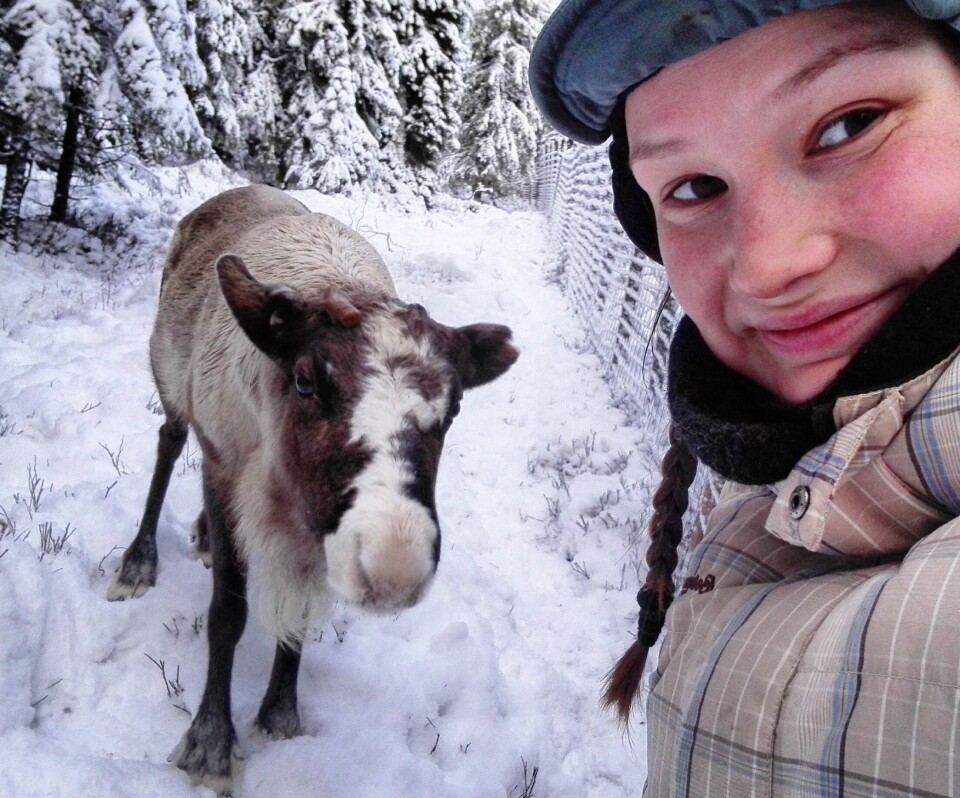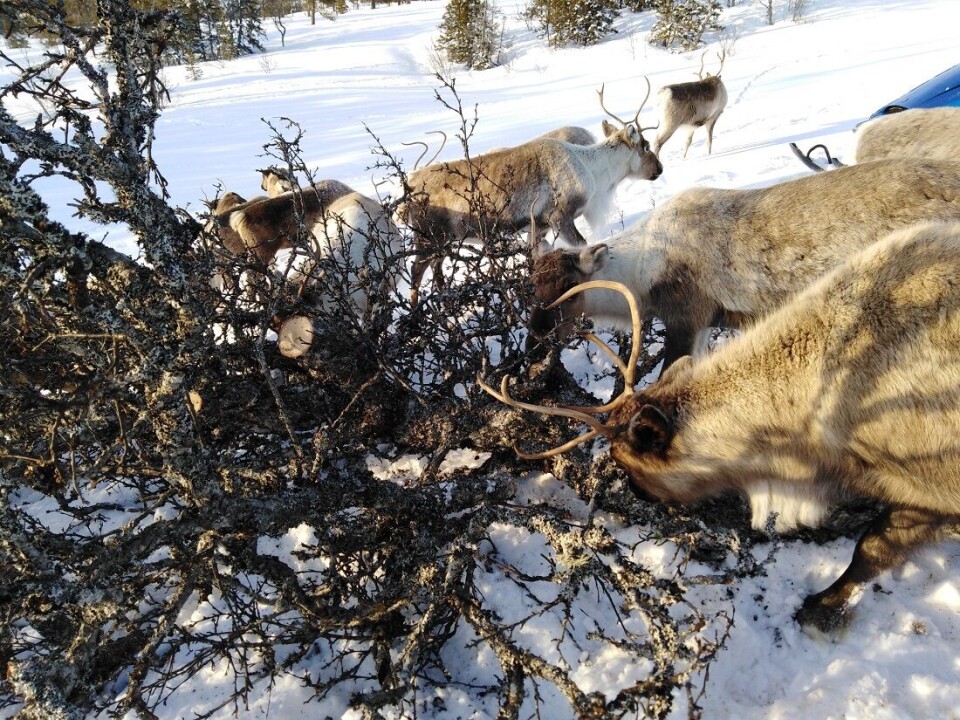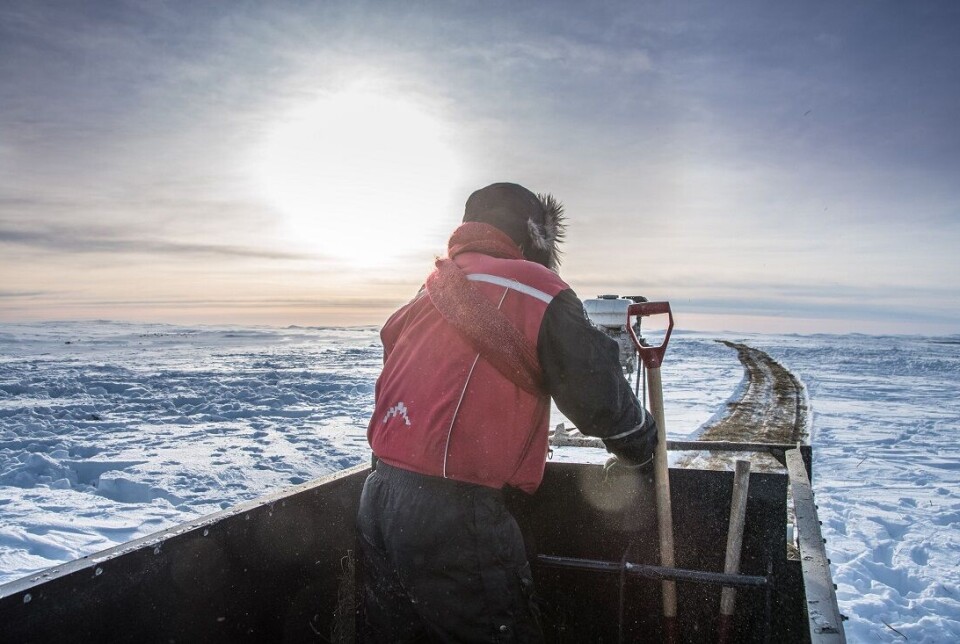THIS CONTENT IS BROUGHT TO YOU BY NTNU Norwegian University of Science and Technology - read more

Climate change is causing problems for reindeer
Unstable winters are making reindeer herding more difficult. The animals are also having trouble finding food on their own.
Reindeer husbandry has always been in a state of change. This is an industry that is used to adapting to the whims of both nature and the authorities. However, both the industry and the reindeer are now facing several challenges related to climate change.
“This isn’t just because it's getting warmer. The precipitation patterns have also changed, and there are greater fluctuations in temperature,” Anna-Laila Danielsen says.
She recently completed her master’s degree at NTNU and her thesis was about reindeer husbandry and climate change.
Danielsen has personal experience of practical reindeer husbandry. She has now spoken to several Sámi reindeer herders who have told her about the new challenges posed by climate change. Danielsen has also spoken to several researchers and people from the County Governor’s Department of Reindeer Husbandry.
“These additional challenges vary according to both topography and geographical areas. They create operational difficulties and can put the animals at risk,” Danielsen says.
Herding reindeer facing new hazards
The reindeer are herded between different areas depending on the seasons. This is to make the best use of the grazing grounds. But an unstable climate is making this much more difficult.
“The Sámi reindeer herders have to move with their herds across lakes and rivers to get to the winter grazing grounds. If these lakes and rivers don’t freeze over, the migration routes disappear,” Danielsen says.
The Sámi reindeer herders she has spoken to also say that as long as there is a thin layer of snow on the ice, regardless of the thickness of the ice, the reindeer try to walk across it. This can be extremely dangerous, because the reindeer can fall through the ice if it is too thin.
“These new conditions create a greater need to think outside the box. Some of the Sámi reindeer herders I spoke to want to build bridges," she says.
This pertains to animal welfare, as it allows for the relocation of reindeer across rivers regardless of the ice conditions.
"The reindeer will be able to cross without the herders worrying about their animals falling through the ice and drowning or freezing to death,” she says.
An unstable climate creates layers of ice
Herding problems are not the only ones. Grazing conditions may also deteriorate.
Large temperature fluctuations can lead to the ground being covered by multiple layers of ice during winter, which in turn means the reindeer are unable to find enough food during certain parts of the year.
“One day, it might be cold with lots of snow. The next day, the temperature might rise above zero. This results in the top layer of snow melting. The day after, or during the night, the melted snow freezes into ice. Snow then falls on top of the ice and the same thing happens again. We end up with many layers of ice in the snow,” Danielsen says.
When the reindeer cannot find enough food themselves, it increases the need for supplementary feeding in the form of hay and pellets. This is expensive, impractical, and time-consuming.
Supplementary feeding will be necessary
“Providing reindeer with all of their food is not considered part of traditional reindeer husbandry in Norway,” Danielsen says. s
By contrast, supplementary feeding has been common in Norway, but both the amount and the method used has varied. In the old days, supplementary feeding consisted of using types of beard lichens found in old-growth forests.
“The problem now is that many old-growth forests have disappeared due to development and land use. Therefore, the Sámi reindeer herders have chosen to use hay and pellets, simply because these are the options available to them,” Danielsen says.
Through trial and error, several reindeer herders have come up with more efficient methods of feeding their reindeer, including the use of feeding machines. After all, they are used to adapting.
However, the supplementary feeding can affect the reindeer’s normal grazing patterns. Dominant reindeer may also keep other members of the herd away from the feed, which is not a problem when they are grazing in the wild.
Some reindeer herders have chosen to move the herd closer to roads during supplementary feeding, because snowmobiles and sleds are unable to withstand the weight of the feed. This may lead to extra strain on these local areas.

Reindeer herders and authorities disagree
The authorities and reindeer herders often have different opinions about solutions and how herding should be carried out.

“To help Sámi reindeer herders tackle climate change, certain climate adaptation measures have been initiated both by the authorities and by the Sámi reindeer herders themselves,” Robert Næss says.
He is an associate professor at NTNU’s Department of Interdisciplinary Studies of Culture.
Næss and researcher Sara Heidenreich were Danielsen’s supervisors during her work on her master’s thesis.
The fact that several old grazing grounds have been protected is contributing to the problems. However, the County Governor’s Department of Reindeer Husbandry is now considering giving the Sámi reindeer herders permission to once again use these old areas as a form of climate adaptation.
“The problem is that this involves an application process. The Sámi reindeer herders find this frustrating since the application process can take time, and they would prefer to be able to move their herds there as quickly as possible,” Danielsen says.

Sceptical of researchers
Many reindeer herders are generally sceptical of researchers and other outsiders who want to tell them how to resolve these challenges.
Researchers are usually people who do not have a background in reindeer husbandry. Therefore, their solutions do not align with the experiences and perceptions of people who have grown up with reindeer herding themselves.
“Since research findings often hold greater legitimacy than the traditional knowledge of the Sámi reindeer herders, this has led to the herders not wanting to take part in the research. That is why we need Sámi researchers who study climate change,” Næss says.
Danielsen’s own practical experience of reindeer husbandry is undoubtedly a strength.
“I grew up with reindeer husbandry, and have felt the physical effects of climate change and seen how quickly these changes occur,” Danielsen writes in the introduction to her thesis.
Reference:
Danielsen, A.L. 'Rein klimaendring, En kvalitativ studie om reindriften i møte med klimaendringene' (Reindeer climate change: A qualitative study of reindeer husbandry in the face of climate change), Masteral thesis, NTNU, 2023. (Abstract)
More content from NTNU:
-
Forever chemicals affect ducklings' genes while they are still in the egg
-
Why are pregnant women in Norway so worried?
-
Politics on Facebook: Populist parties choose divisive issues on purpose
-
Social media is connected to cyberbullying – but not how we thought
-
Forskere ved NTNU får nesten 24 millioner av EU for å lage nye strømomformere
-
This helps the youngest children enjoy school more





































